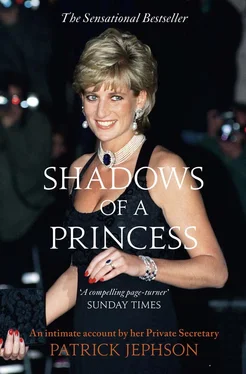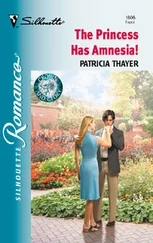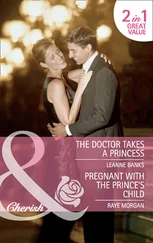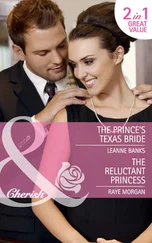1 ...6 7 8 10 11 12 ...32 When great events were in the offing, the international TV networks set up their outside broadcast studios among the trees, creating a media gypsy camp under a forest of aerial masts. From this cover, preoccupied courtiers could be ambushed as they hurried by, later to discover that they had become unwitting walk-on extras in the main feature. As additional entertainment, Lancaster House would occasionally lay on a G7 or NATO summit, allowing us the chance to peer at the visiting Presidents and Prime Ministers as they were conveyed past in their limousines.
Safely across the pedestrian crossing at the foot of Constitution Hill, our small detachment marched through the gates into the forecourt of Buckingham Palace, the focus of a hundred pairs of jaded tourist eyes. Were these men in the Simpson’s off-the-peg suits important? They did not look royal, that was certain (especially the one at the back who was explaining to the police that he had not yet got his security pass). But just in case, we had better take a photograph anyway – through the railings as if they were animals in a zoo; or inmates, I sometimes thought, at a secure institution.
Buckingham Palace has two main working entrances – one round the side near the kitchens and one at the front on the right as you look at it. Like everything else, use of each entrance is determined by your place in the hierarchy. Being ‘household’, we strode proprietorially up the steps to the Privy Purse Door, thus being spared the indignity of queuing up with the delivery men at the side gate.
A liveried doorman spared us the further indignity of having to open the door ourselves and, I noticed, greeted Richard and Christopher as if he really recognized them. This is the life, I thought, as my nostrils had their first sniff of the unique Palace smell: a mixture of polish and hot light bulbs with just a hint of mothballs. My feet at last felt qualified to pad across the red carpet as I followed my hungry guides into the bowels of the building.
It was as well that I stayed close to them, because the route from the door to the dining room was labyrinthine to the uninitiated. The entrance gave on to a stairwell, which gave on to a corridor, which jinked, climbed, narrowed and divided before at last turning into the great entrance hall from which the dining room debouched. Even after several months’ practice the journey could seem hazardous, though whether this was from fear of getting lost or getting found I was never quite sure. The latter was a real anxiety at moments of internal tension, as my route even to the nearest exit offered ample opportunity for unexpected encounters with the Palace’s most senior inhabitants.
Running this gauntlet was made slightly more pleasurable by detouring into the Queen’s Equerry’s Room for a preprandial drink. Every day without fail, it was full of courtiers intent on gin and gossip. While exploring the drinks tray on that first day I learned another lesson which time was to reinforce. In a way reminiscent of the tolerance extended by the Prince’s organization to his wife’s, the senior household played forbearant host to its subordinate satellites. Among these the Waleses’ organization constituted the most important – and certainly the largest – planet, but all down to the merest Pluto of royalty theoretically shared equal status as members of household. This entitled them to walk on red carpet, cruise the Royal Enclosure at Ascot and enjoy a number of other perks, one of whose daily rituals I was now experiencing.
The atmosphere reminded me of one of those better service messes where the members had not forgotten some basic rules of communal living, principally the endangered art of making polite conversation. This was not surprising given the preponderance of ex-military personnel, but the similarity began to fray when I listened to the shoptalk which, inevitably, dominated the conversation. Beneath the surface conviviality I slowly detected a lack of the kind of common purpose to be expected even in the least cohesive wardroom.
This was obviously a valuable clearing house for the various informal royal intelligence services. The principal members of the royal family were represented by their private staffs and the heads of the Palace’s great departments represented the behind-the-scenes support structure. This mixture of disparate interests genteelly fenced and bartered in a way that cannot have changed much, I supposed, since Victorian times. Then as now, representatives of lesser households might have felt themselves mere cousins admitted to the ancestral seat where the inner family carried on with its laundry, hiding its resentment that the visitors had the intrusiveness of kin without the discretion of polite guests. The soothing properties of civilized conversation were thus much needed – and were generously employed, not least in greeting the new boy, for which I was duly grateful.
The room quickly emptied in a general move towards lunch. I joined the throng feeling I was among friendly people whose friendship would nevertheless have carefully controlled limits. I would be accepted subject to certain constraints, most of which appeared reasonable to me. These would be imposed by my comparative youth, junior position, temporary appointment and membership of a subordinate organization, tenants of a property outside the pale. In short, we were tolerated. Politely, entertainingly and often warmly, but still only tolerated.
As senior staff, our ‘canteen’ was the Buckingham Palace Household Dining Room. In its scale, decor, portraiture and appointments it encouraged us to feel reassuringly exclusive. We helped ourselves from a sideboard and sat where we thought the best conversation could be found – or avoided.
On that first day I was surprised by the variety of my fellow lunchers. There were the Queen’s ladies-in-waiting – treated with universal respect – and the Queen’s private secretaries – also treated with respect, at least by me. But there were others further down the hierarchy who hinted at the bewildering diversity of the royal household. There was the captain of the Queen’s Flight looking smooth. There was the keeper of the Royal Collection, looking not at all like Anthony Blunt. There was the press secretary, wearing his poker-player’s face. And there was the senior policeman, looking surprised to find himself there at all.
I am sure I did too. My morale was soon boosted when, in a ceremony that beat all the majestic pomp and circumstance of the British Crown, the duty footman dymo-taped my name on to a napkin ring. I may only have been temporary, and I would often lunch somewhere else, but now I was a member of the club.
That first afternoon I strolled back across the park to St James’s feeling pretty pleased with myself. It was a sensation that soon became unfamiliar. The job often made me feel so anxious that the outward perks – even my own napkin ring – seemed like a bad joke. On some days I would have swapped them all for a friendly Portakabin somewhere, anywhere, else. As I returned to my new office that day, however, I was beginning to believe that I could act my part. From my temporary perch I felt the first stirrings of confidence as I measured Richard’s desk with my eye and contemplated a suitable fate for his Australian beer mat if he was careless enough to leave it behind when he moved along the corridor to his new post as comptroller.
The afternoon’s programme was intended to begin my education in Palace life. I was to meet two of the more significant Palace office-holders for ‘a chat’, and in their own way they neatly illustrated the latent tensions that I had detected at lunch. There was an old guard, almost literally. They were mostly ex-Guards Regiment, not very qualified in anything very much, but at least superficially friendly, if tending to be dogmatic about How Things Should Be Done. Then there was a younger guard, less overtly military, less dogmatic, no less friendly and arguably better qualified. As members of the heir’s office, we were usually grouped with this second category, not least by temperament.
Читать дальше












